RARE! Original WWII July 1943 USS Essex (CV-9) U.S. Navy Camouflage Paint Blueprint

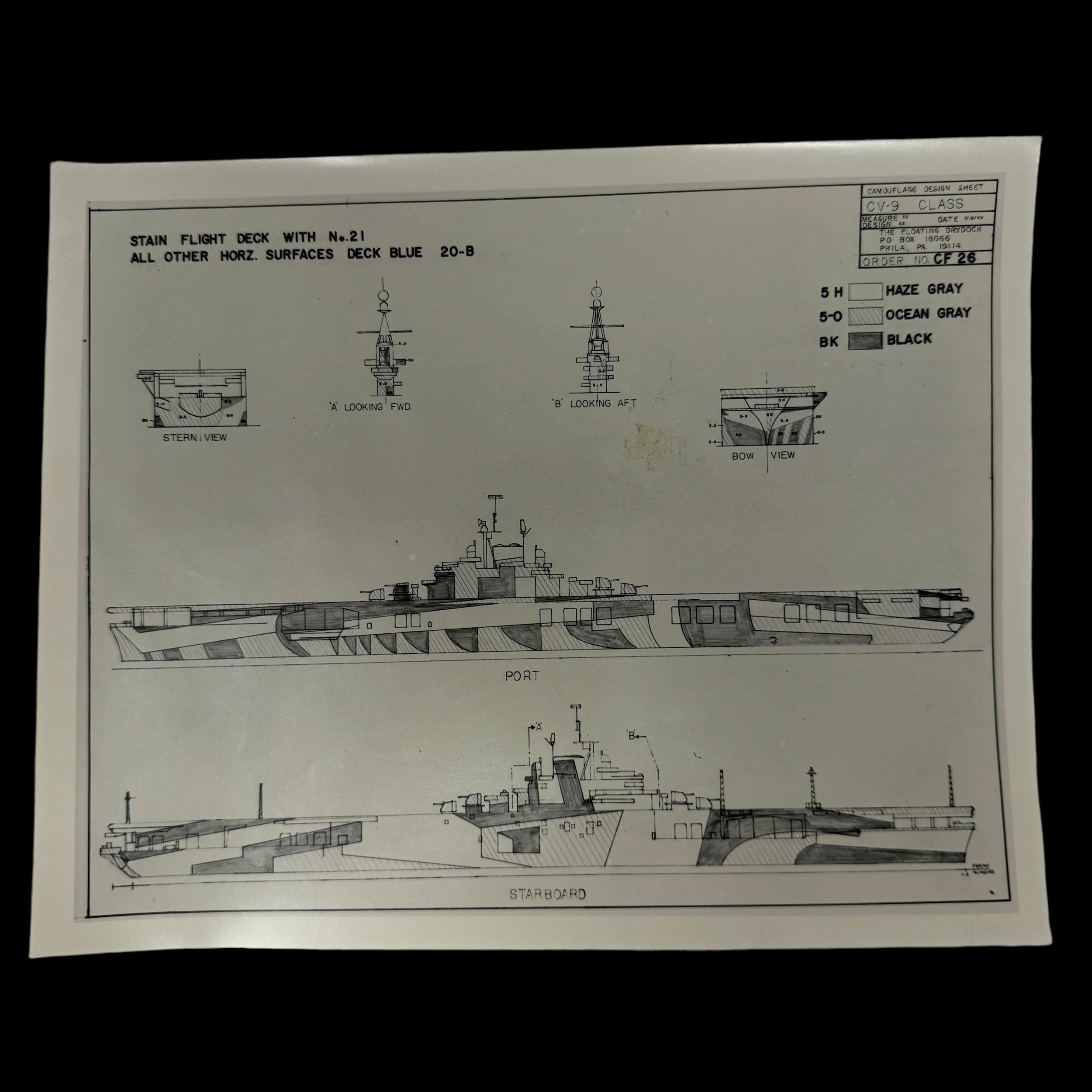


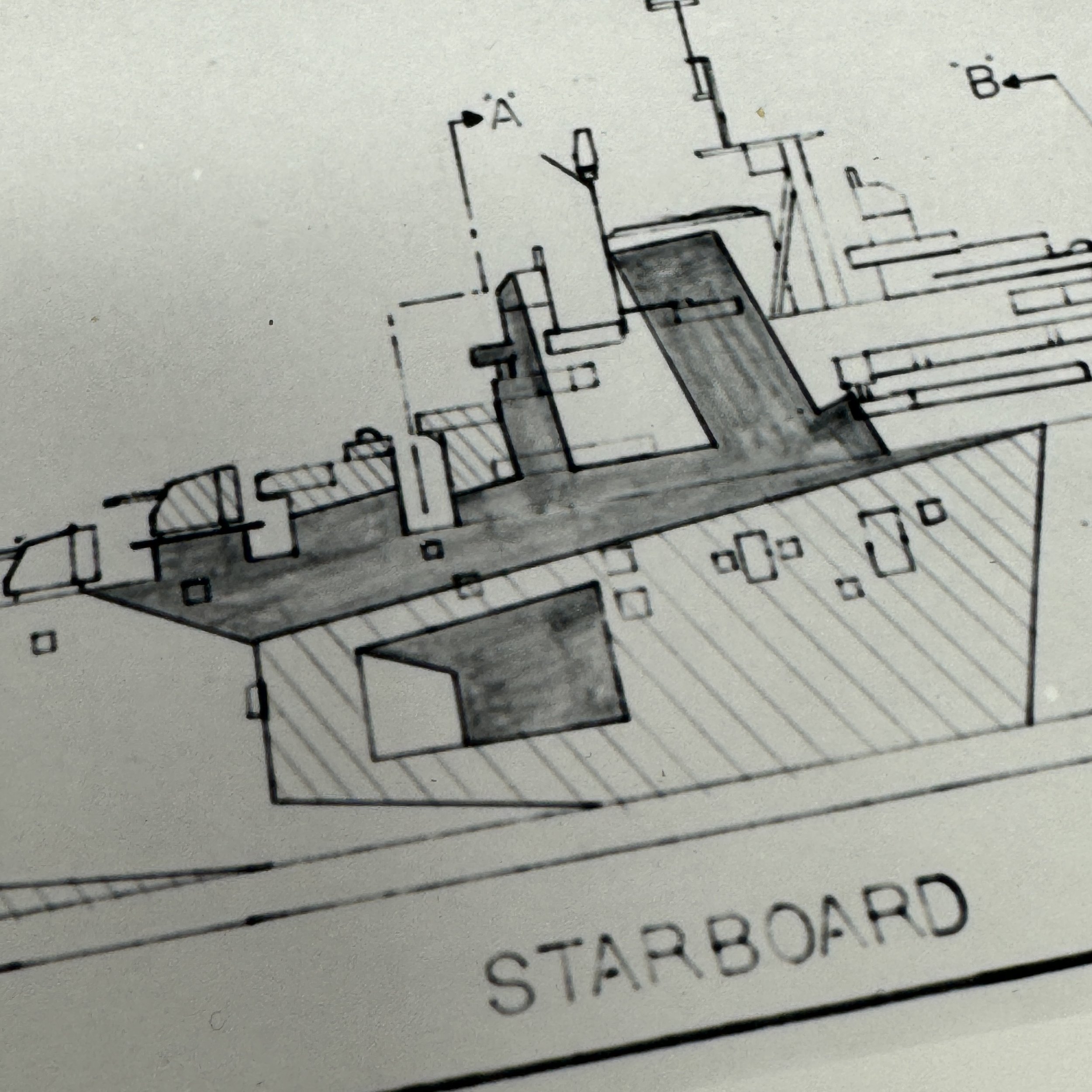


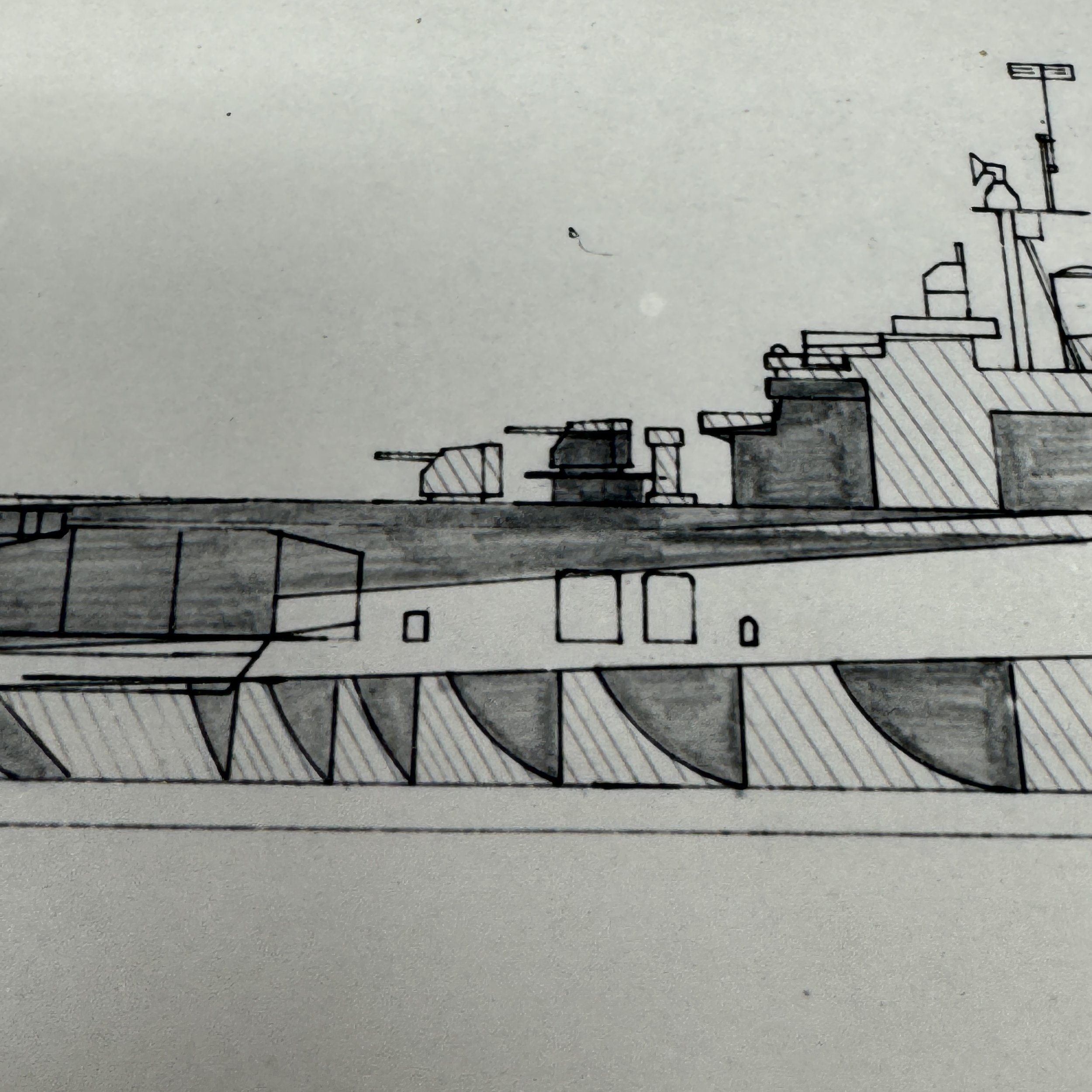




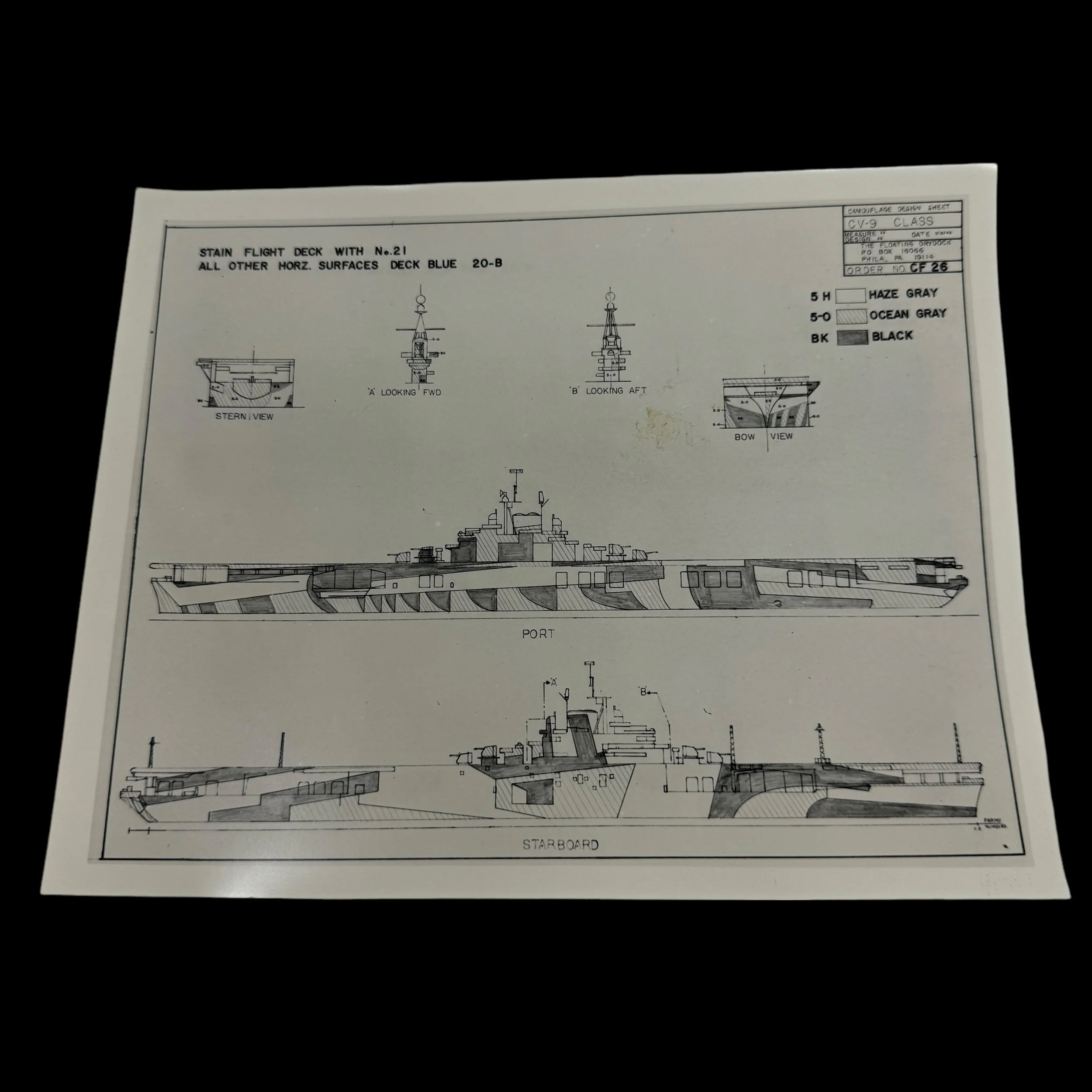
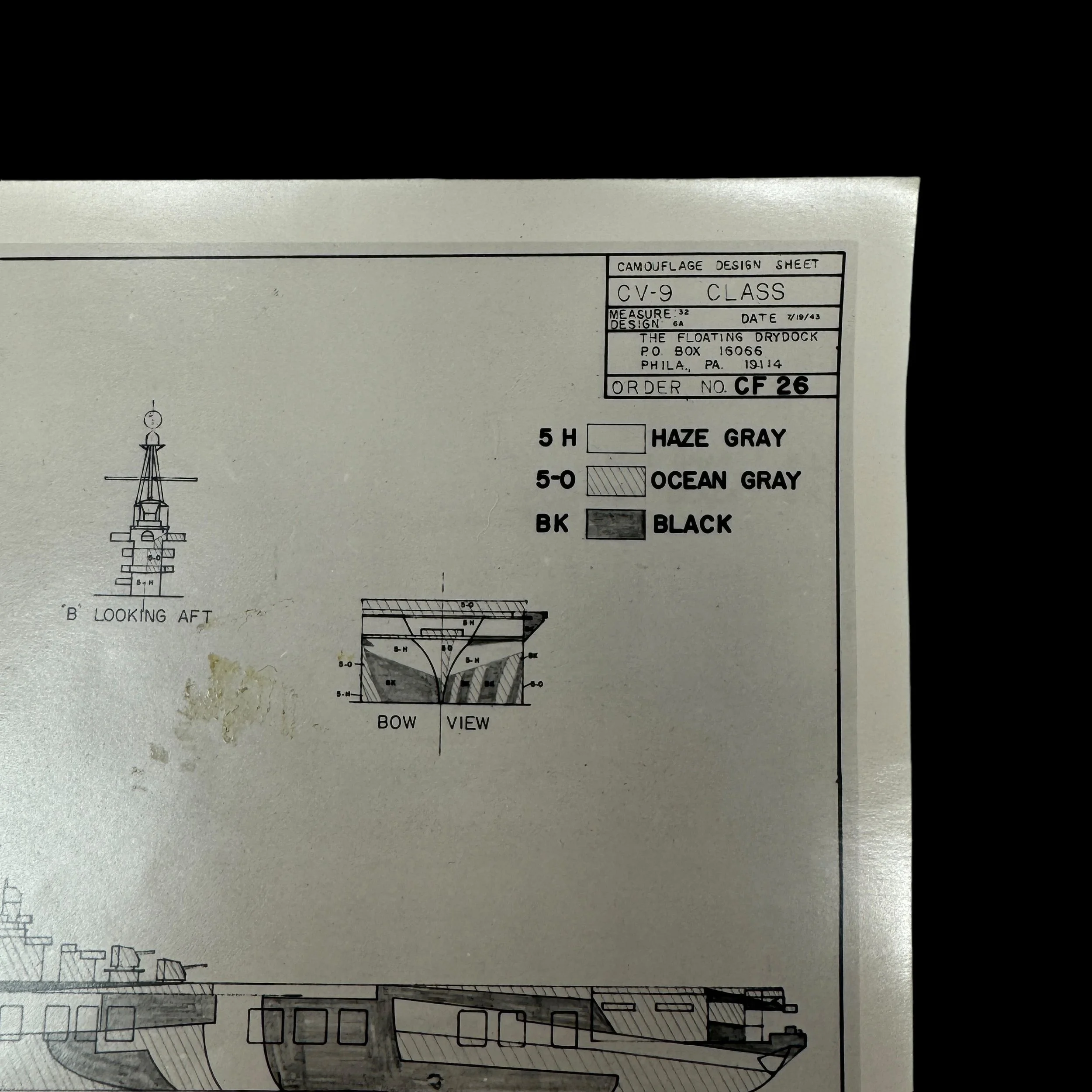
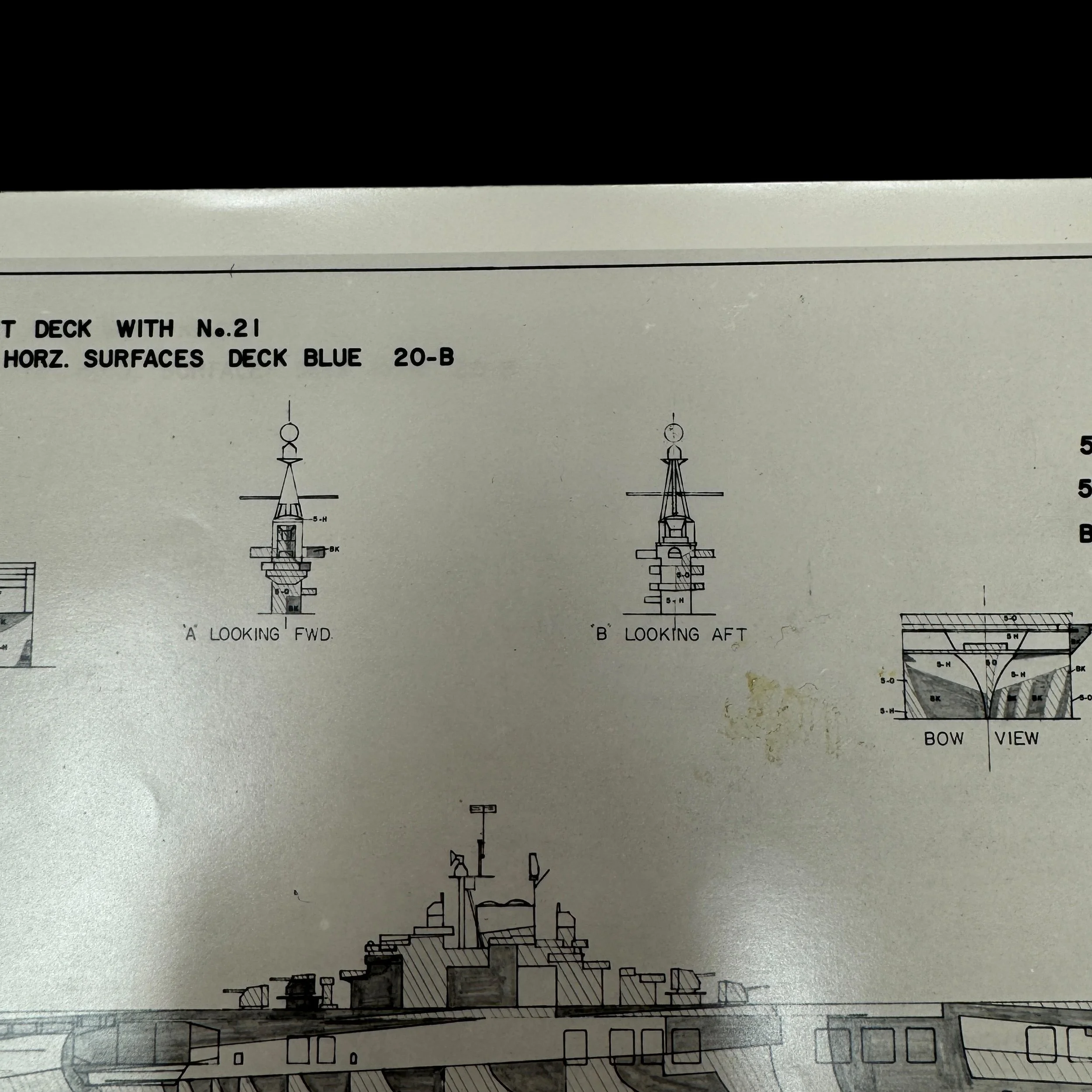
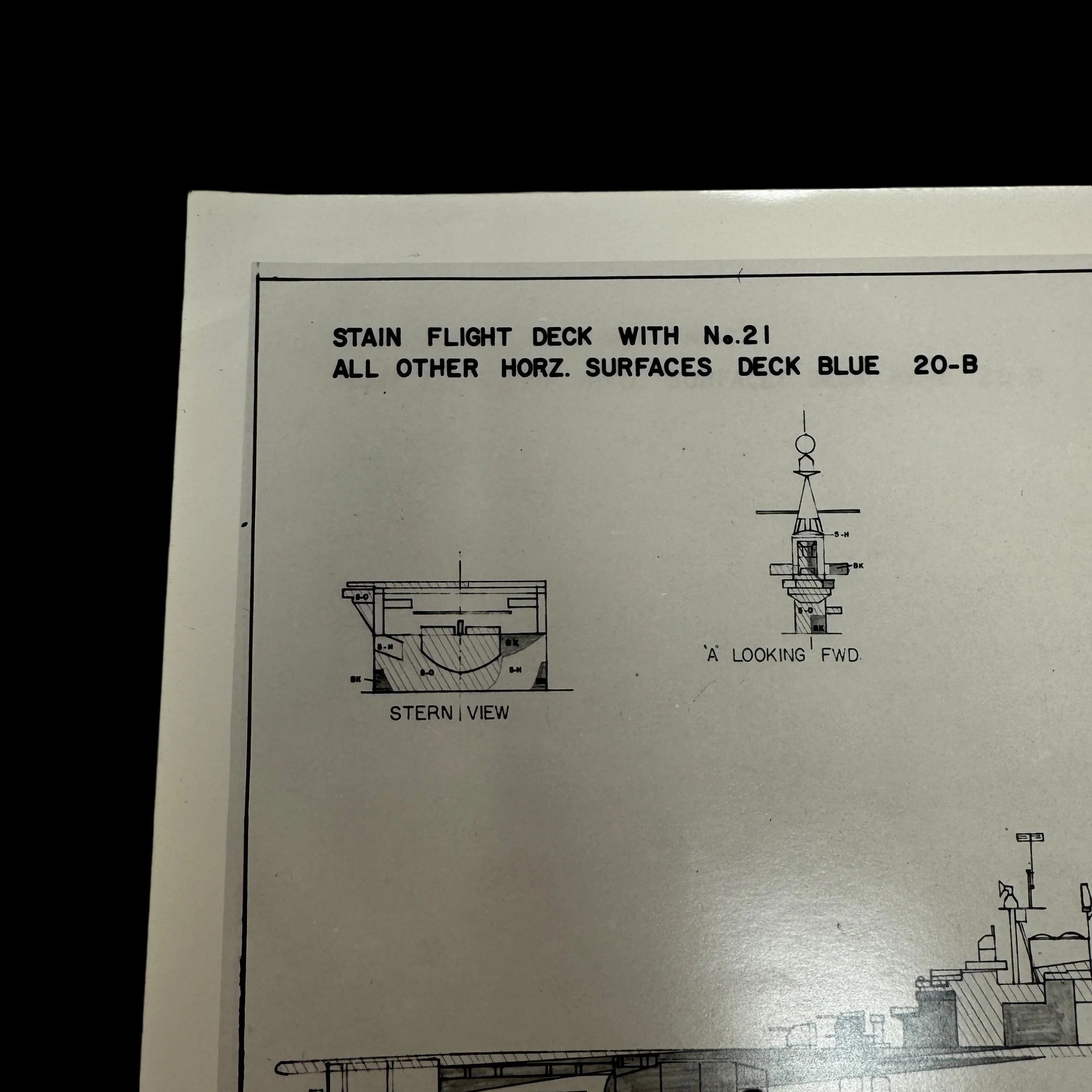
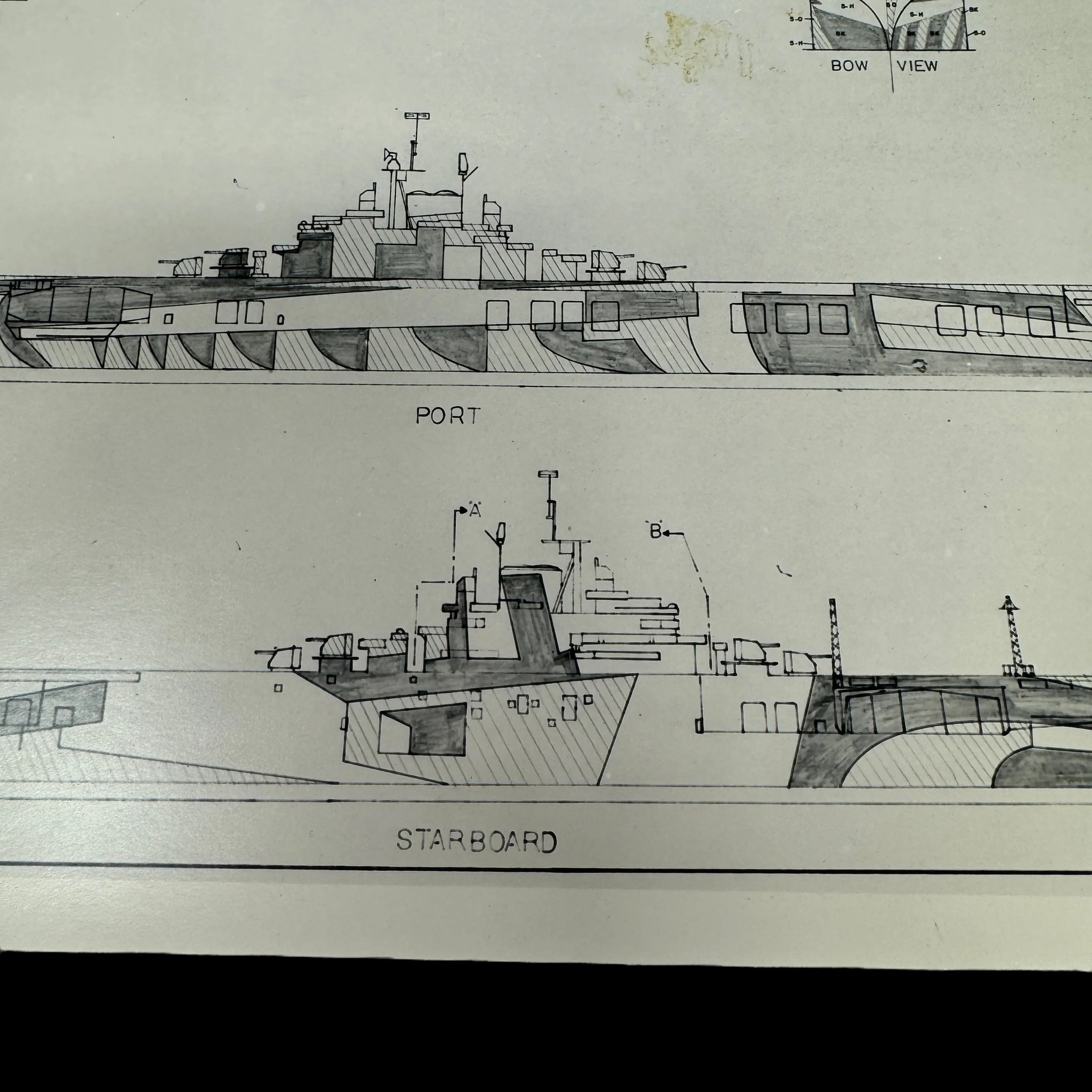
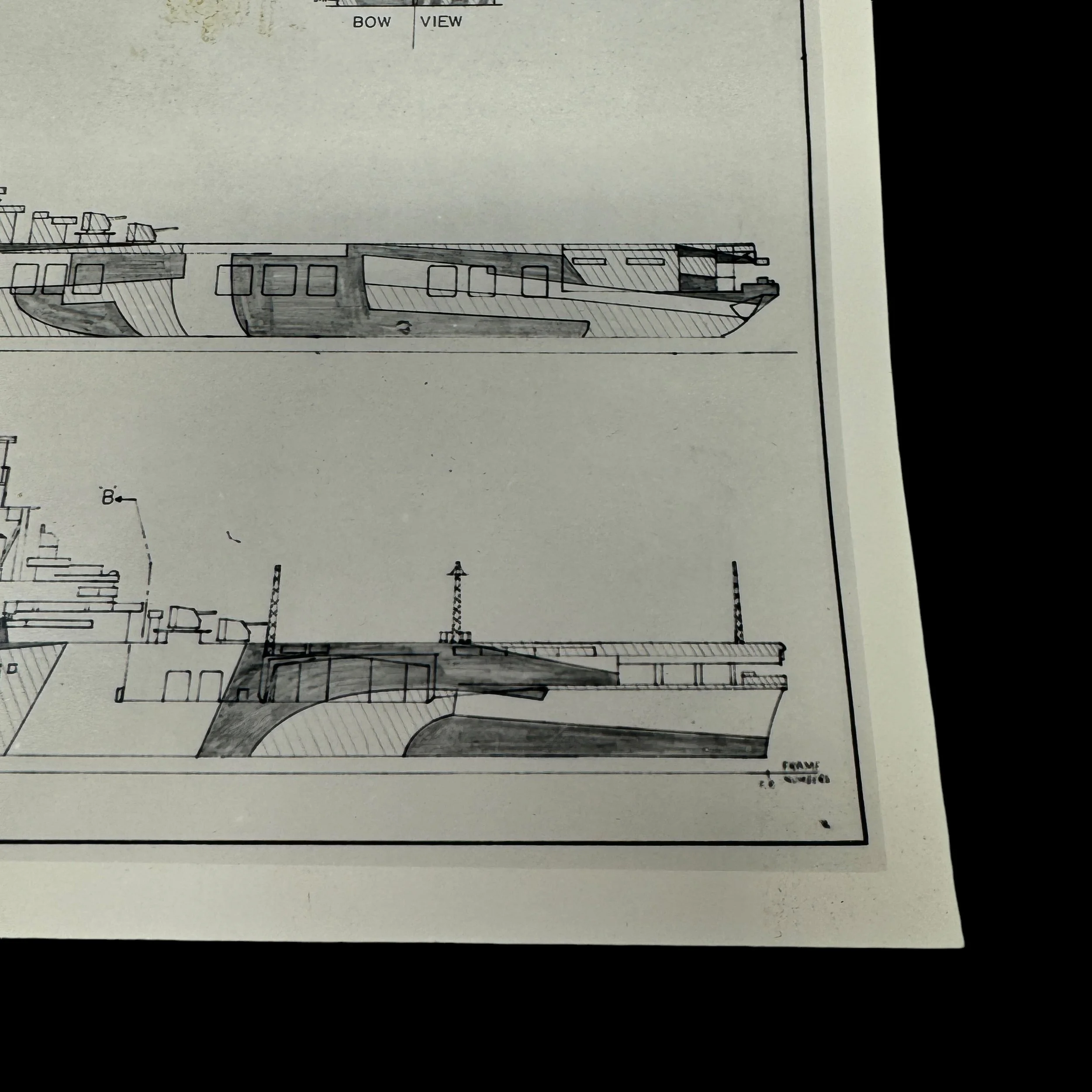
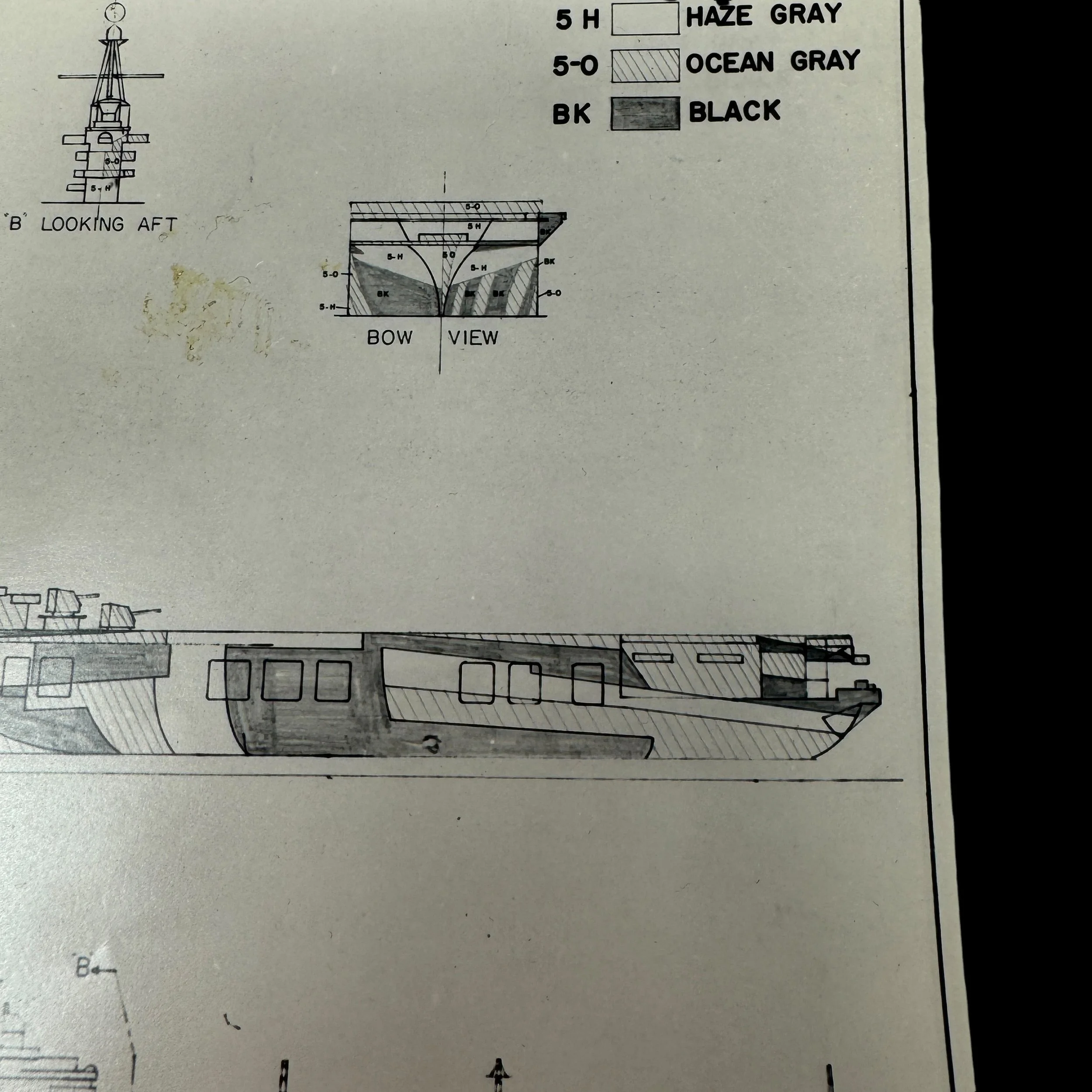
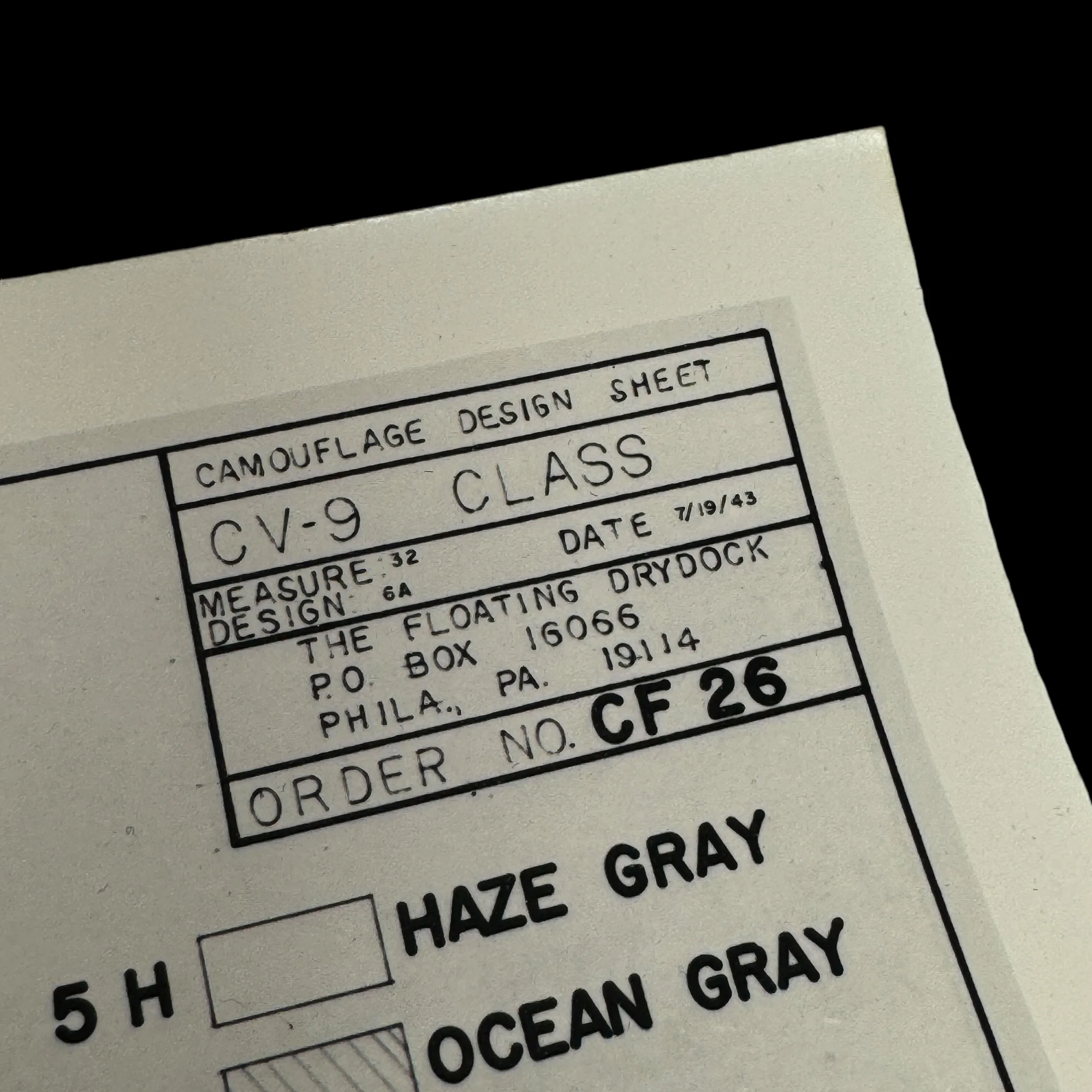
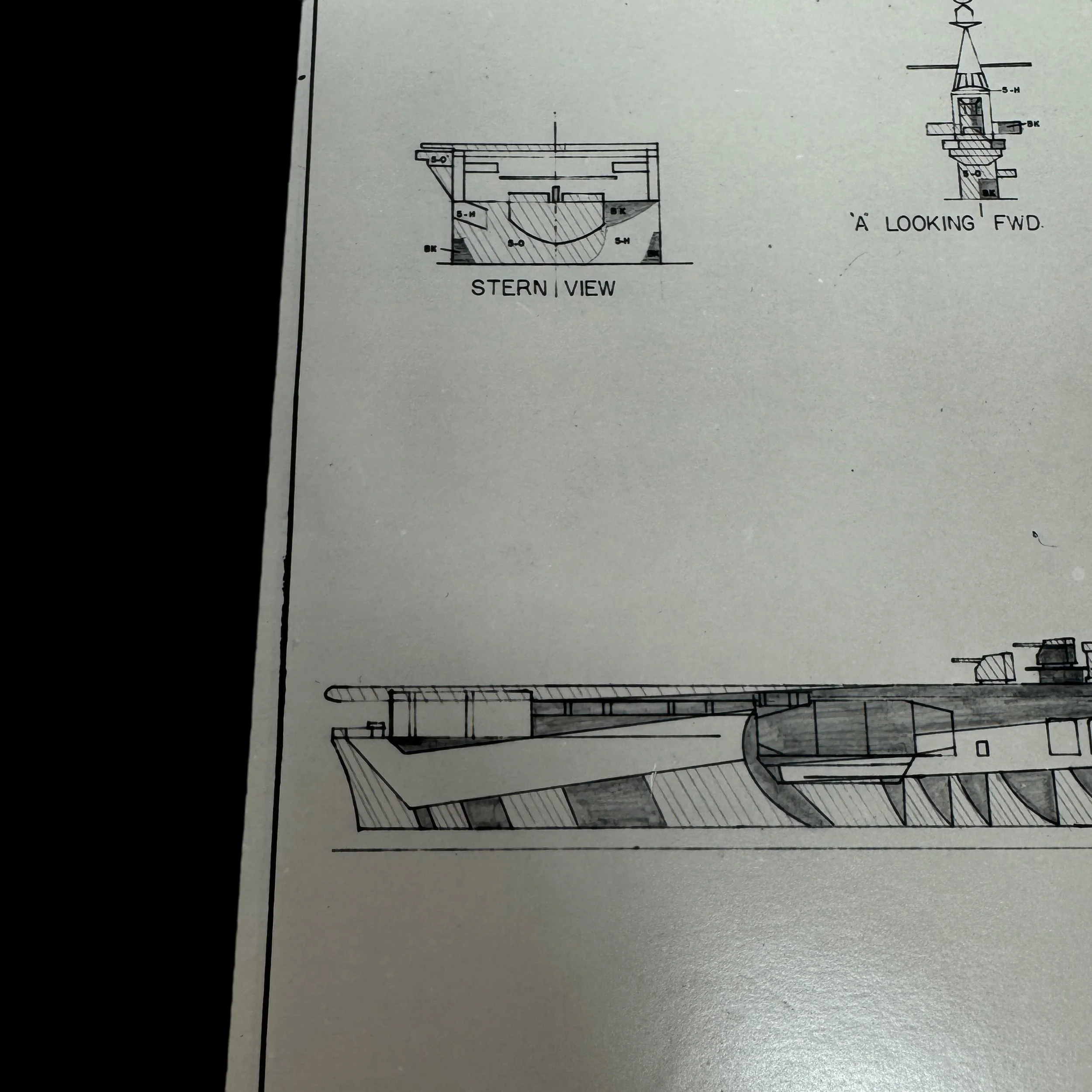
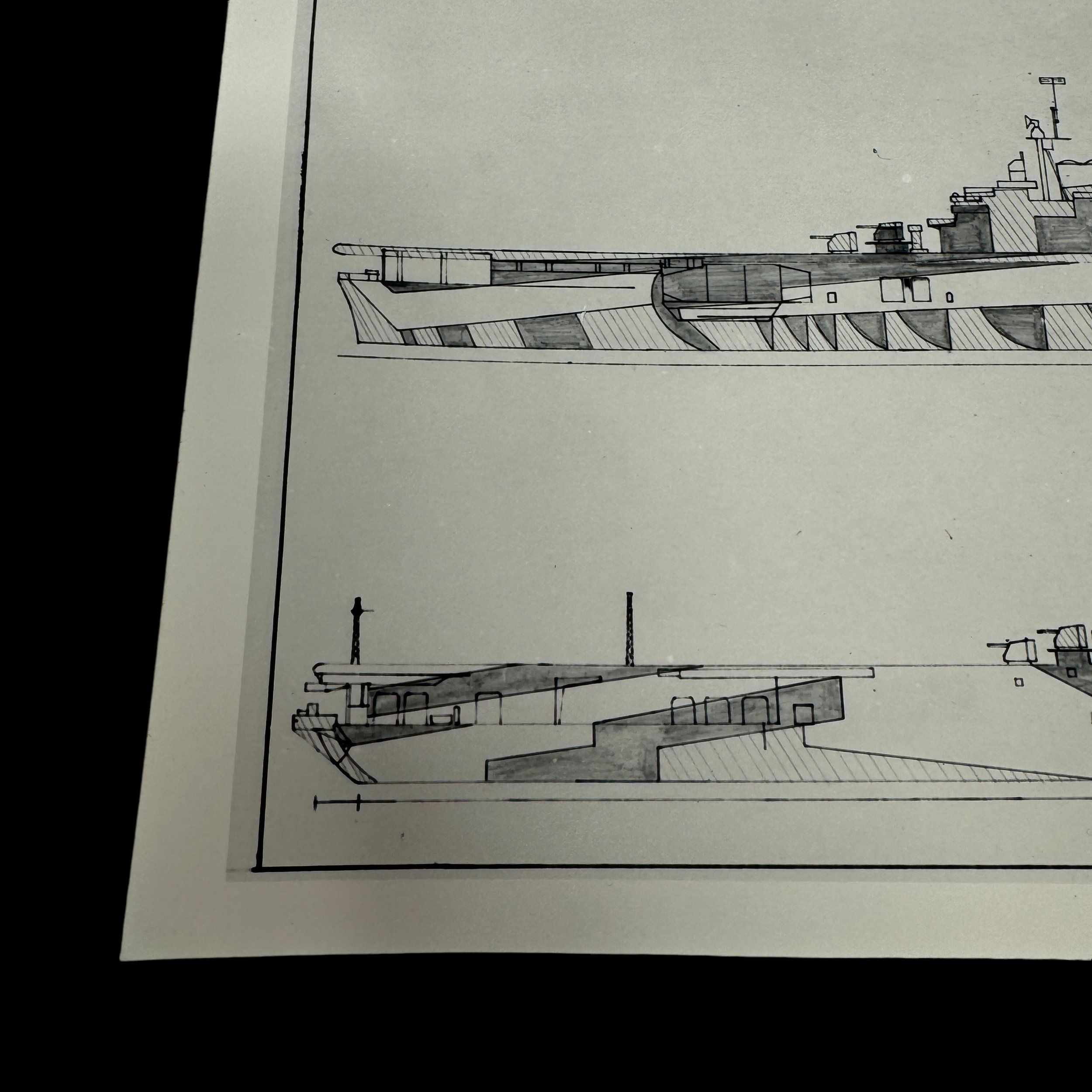
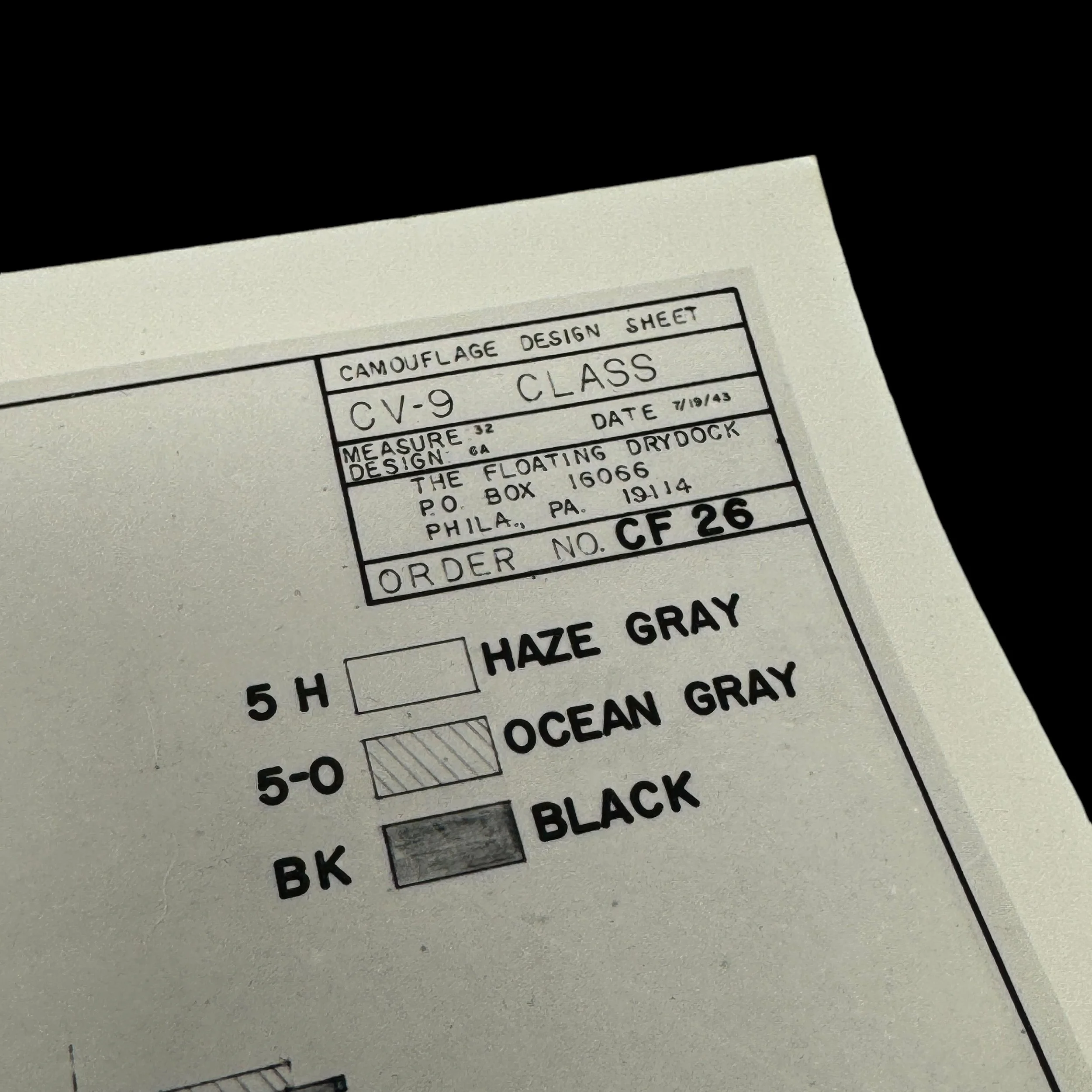
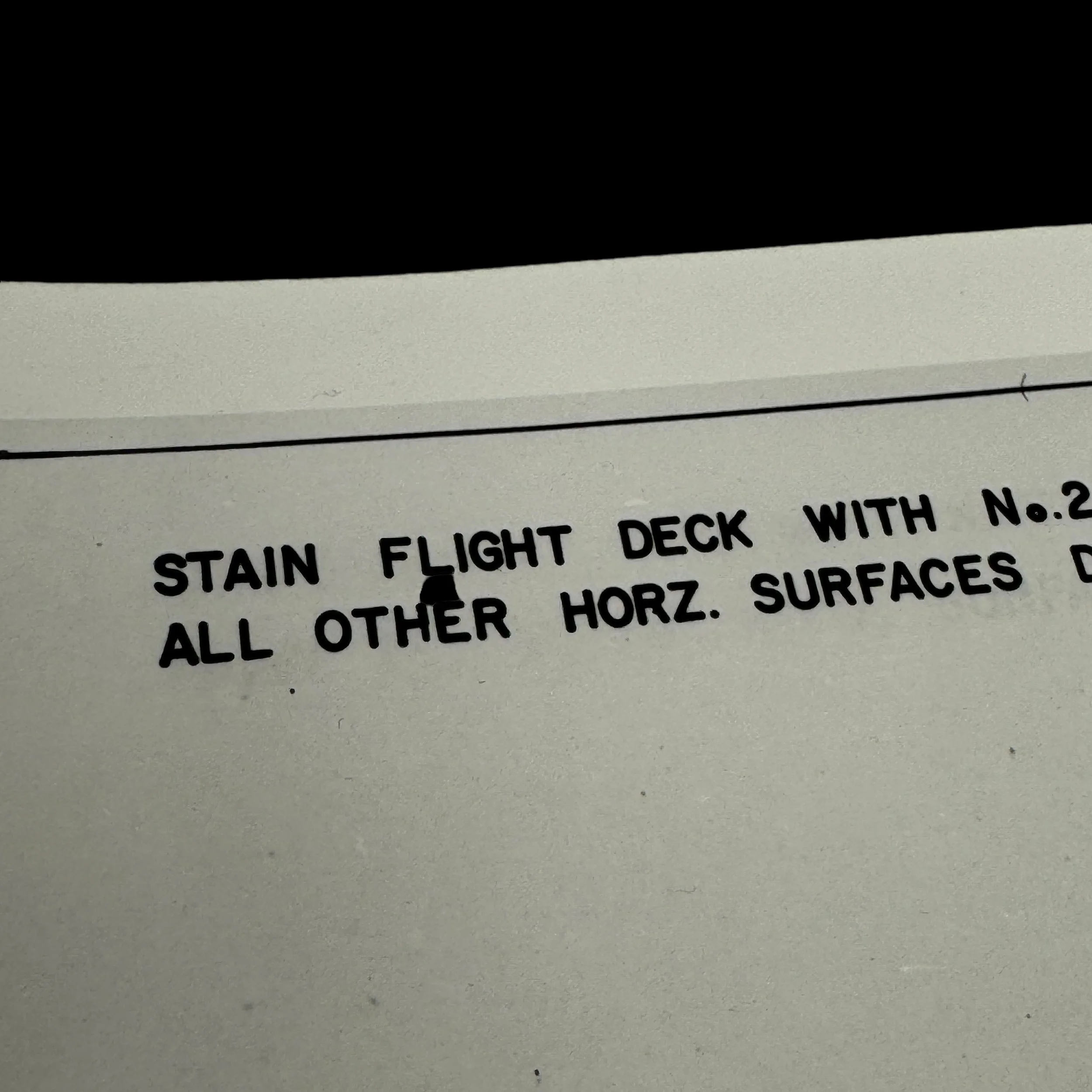
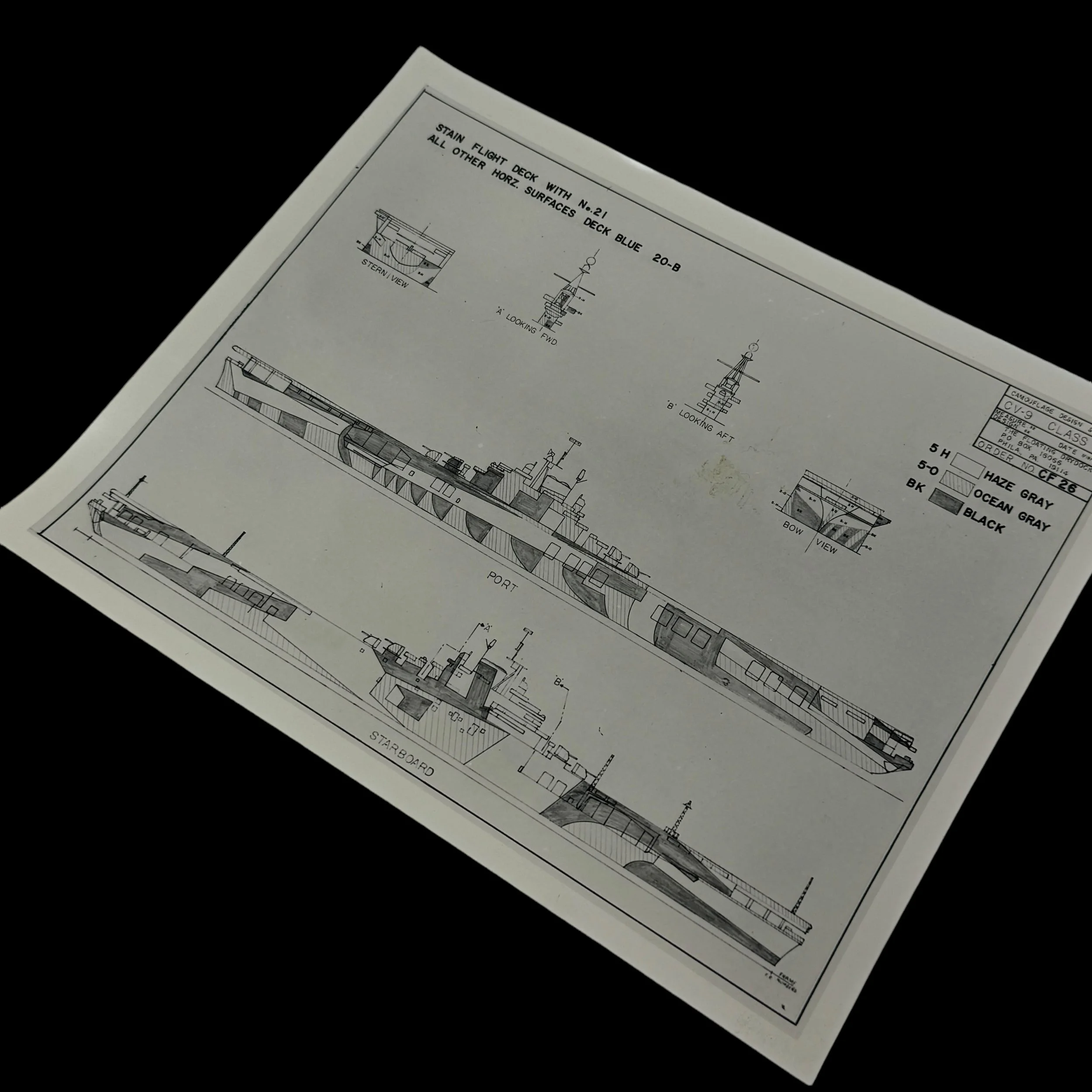
RARE! Original WWII July 1943 USS Essex (CV-9) U.S. Navy Camouflage Paint Blueprint
Comes with a hand-signed C.O.A.
Size: 8 x 10 inches
This exceptionally rare, museum-grade WWII artifact is an original WWII camouflage blueprint design sheet for the USS Essex (CV-9), dated July 19, 1943.
This historic blueprint captures the strategic thinking behind the vessel's wartime camouflage, meticulously designed to blend the carrier into the ocean's waves, providing it with crucial protection against enemy detection. The camouflage design detailed on this blueprint was integral during the USS Essex's extensive service in the Pacific Theater, where it played a pivotal role in many significant operations, including the Battle of the Philippine Sea and raids against the Japanese home islands.
As the lead ship of its class, the USS Essex embodied cutting-edge naval technology, and its camouflage design was a crucial element of its wartime effectiveness. This original design sheet represents the careful consideration given to every aspect of its operational success, from its powerful aircraft capabilities to its visual concealment from enemy forces.
This one-of-a-kind artifact not only represents a pivotal moment in naval strategy but also a key piece of the USS Essex's legendary service during WWII. Accompanied by a hand-signed Certificate of Authenticity, this original camouflage blueprint offers collectors and historians an invaluable glimpse into the tactical measures that helped define the Pacific War.
Key battles and engagements that the USS Essex (CV-9) participated in during World War II, along with their corresponding dates:
1. Marcus Island Raid
Date: August 31, 1943
The USS Essex's first combat action involved a carrier strike against Japanese installations on Marcus Island.
2. Wake Island Raid
Date: October 5–6, 1943
The Essex took part in air raids against Wake Island, targeting Japanese fortifications.
3. Gilbert Islands Campaign (Battle of Tarawa)
Date: November 19–23, 1943
The Essex provided air support for the U.S. invasion of the Gilbert Islands, particularly the Battle of Tarawa.
4. Kwajalein and Majuro Atolls (Marshall Islands Campaign)
Date: January 29 – February 3, 1944
The Essex participated in strikes against Kwajalein and Majuro Atolls as part of the Marshall Islands Campaign.
5. Truk Island Raid (Operation Hailstone)
Date: February 17–18, 1944
One of the most significant raids of the war, the USS Essex was involved in the large carrier air assault on Truk, a key Japanese naval base.
6. Palau, Yap, Ulithi, and Woleai Raids
Date: March 30 – April 1, 1944
The carrier struck Japanese airfields and facilities on Palau, Yap, Ulithi, and Woleai.
7. Hollandia Operations (New Guinea Campaign)
Date: April 21–24, 1944
The Essex provided support for the Allied landings at Hollandia in New Guinea.
8. Marianas Campaign (Battle of Saipan)
Date: June 11–24, 1944
The Essex launched airstrikes in support of the American invasion of Saipan.
9. Battle of the Philippine Sea (Great Marianas Turkey Shoot)
Date: June 19–20, 1944
The Essex participated in this decisive naval battle, where U.S. carrier aircraft decimated the Japanese naval air force.
10. Battle of Tinian
Date: July 24 – August 1, 1944
The Essex provided air support for the U.S. Marines' invasion of Tinian.
11. Battle of Guam
Date: July 21 – August 10, 1944
The Essex played a crucial role in supporting the recapture of Guam by U.S. forces.
12. Palau Islands Campaign
Date: September 6–30, 1944
The carrier launched strikes to prepare for the invasion of Peleliu.
13. Philippine Campaign (Battle of Leyte Gulf)
Date: October 23–26, 1944
The USS Essex was heavily involved in this massive naval battle, considered one of the largest in history, aimed at liberating the Philippines.
14. Luzon Attacks and Battle of Mindoro
Date: December 14–16, 1944
The Essex launched airstrikes against Japanese targets in Luzon to weaken their defensive capabilities.
15. South China Sea Raids
Date: January 12–16, 1945
The Essex participated in airstrikes against Japanese targets in Indochina and the South China Sea.
16. Battle of Iwo Jima
Date: February 19 – March 26, 1945
The Essex provided air support for the U.S. Marines during the invasion of Iwo Jima, a critical battle in the Pacific.
17. Okinawa Campaign (Battle of Okinawa)
Date: April 1 – June 22, 1945
The Essex played a key role in providing continuous air support during the Battle of Okinawa, the last major amphibious assault of WWII.
18. Raids on the Japanese Home Islands
Dates: July 10 – August 15, 1945
The USS Essex participated in the final airstrikes against Japan’s home islands, targeting factories, transportation hubs, and military installations.
19. Surrender of Japan
Date: September 2, 1945
Although the USS Essex didn’t engage in combat during the formal surrender, it was part of the naval presence in Tokyo Bay when the Japanese signed the surrender documents aboard the USS Missouri.
Historical Context of the USS Essex (CV-9)
Commissioned in December 1942, the USS Essex was built at Newport News Shipbuilding and Drydock Company and became the first of the Essex-class carriers, a line of 24 aircraft carriers built during WWII. The USS Essex was a formidable force, capable of launching and recovering large numbers of aircraft, which made it a central figure in offensive operations against Japanese forces. The ship was present at major battles, including the Battle of the Philippine Sea, the Marianas Campaign, and strikes on the Japanese home islands. It also supported ground operations during iconic engagements like the Battle of Iwo Jima and the Battle of Okinawa.
The ship’s extensive and critical service in hostile waters necessitated advanced protective measures—measures that included the use of camouflage. During WWII, U.S. naval vessels were often targeted by enemy aircraft, submarines, and long-range artillery. Camouflage was designed to reduce visibility and mislead enemies about the ship's size, direction, and speed. This design strategy would be a crucial element in helping the USS Essex evade detection, survive enemy attacks, and contribute to the overall success of Pacific naval operations.
The Camouflage Design Sheet – Dated July 19, 1943
This original camouflage blueprint, dated July 19, 1943, is not merely a technical document; it’s a vivid representation of the innovative wartime strategies that transformed naval warfare. The blueprint meticulously outlines the ship's paint scheme, color patterns, and the visual techniques that were intended to make the USS Essex harder to spot against the ocean’s horizon.
The specific pattern and coloration depicted in this design sheet were part of the Navy’s broader camouflage plan, which varied depending on the ship’s location, mission, and the type of threat it faced. The design sheet for the USS Essex would have accounted for the ship’s role as a fast-moving aircraft carrier, often operating in open waters where both aerial and surface threats were constant. By incorporating varying shades of blue, gray, and green, the camouflage aimed to break up the ship’s outline, making it blend into the sea and sky, especially in the vast expanses of the Pacific.
The significance of this camouflage blueprint lies in its application during some of the most intense naval operations of the war. The design was implemented during the Essex’s service in the Pacific Theater, where Japanese forces relied heavily on aerial reconnaissance to locate and target American carriers. The successful use of camouflage allowed the USS Essex to evade many of these attempts, ensuring that it could continue to launch airstrikes, support amphibious landings, and serve as a mobile airbase throughout the war.
The Role of Camouflage in Naval Warfare
Camouflage during WWII was an essential defensive measure, and the blueprint for the USS Essex represents one aspect of this broader strategy. Known as "Measure 32," the Navy’s camouflage measures during the war included various patterns designed to disrupt a ship’s appearance. These patterns used contrasting colors and shapes to deceive the enemy regarding the ship’s range, speed, and course, or to make it blend seamlessly into the environment. The Essex's blueprint from July 19, 1943, reflects the Navy’s commitment to reducing its carriers’ vulnerability in a war where air superiority was becoming a decisive factor.
Aircraft carriers like the USS Essex were particularly vulnerable to attack because of their size and strategic importance. If a carrier could be located, it could be targeted by Japanese aircraft, submarines, or even kamikaze attacks later in the war. By utilizing effective camouflage designs, the U.S. Navy increased the chances that ships like the Essex could approach enemy positions without detection, launch surprise air raids, or reposition without drawing attention.
The blueprint’s detailed instructions on paint schemes and pattern applications demonstrate the technical precision required to ensure that these massive vessels were adequately protected. The colors and patterns had to be applied meticulously, following the specific guidelines laid out in documents like this blueprint. The fact that this blueprint dates back to mid-1943, just months after the Essex's commissioning, underscores its critical importance in the early stages of the carrier’s deployment.
The USS Essex in Action
From the moment the USS Essex set sail, it became a crucial player in several key campaigns, many of which saw fierce combat and heavy enemy fire. The camouflage design outlined in this blueprint was likely first employed during the ship’s involvement in raids against Japanese bases in the Central Pacific. It continued to serve as a critical defensive measure throughout subsequent campaigns.
One of the defining moments of the Essex's service came during the Battle of the Philippine Sea, also known as the "Great Marianas Turkey Shoot." The ship’s aircraft played a pivotal role in this engagement, which saw the near-total destruction of Japanese carrier-based aviation. The effective use of camouflage during this battle helped ensure that the Essex was able to avoid significant damage despite being a prime target for Japanese forces.
The USS Essex’s camouflage likely played a role in its participation in other significant operations, including the liberation of the Philippines, strikes on Formosa, and the battle for Okinawa. The ship’s survival through multiple campaigns, despite being a key target for Japanese forces, is a testament to the success of the defensive measures, including the camouflage strategies detailed in this July 19, 1943, blueprint.
A Piece of History
This original camouflage blueprint from July 19, 1943, is more than a relic of naval architecture—it is a window into the strategic innovations that helped the U.S. Navy achieve victory in the Pacific. Its historical significance lies not just in its rarity, but in its direct connection to one of the most storied aircraft carriers of WWII. The USS Essex helped shape the course of the war, and this blueprint was a key part of the tactical considerations that allowed the ship to navigate hostile waters while delivering decisive blows to the enemy.
Accompanied by a hand-signed Certificate of Authenticity, this museum-grade artifact offers a unique opportunity for collectors and historians alike to own a tangible piece of naval history. The camouflage blueprint represents the fusion of art, science, and warfare—a reminder of the ingenuity and determination that characterized the American war effort. Owning this artifact is akin to holding a piece of the USS Essex’s wartime legacy, a ship that earned 13 battle stars and a Presidential Unit Citation for its extraordinary service in the most pivotal theater of the war.